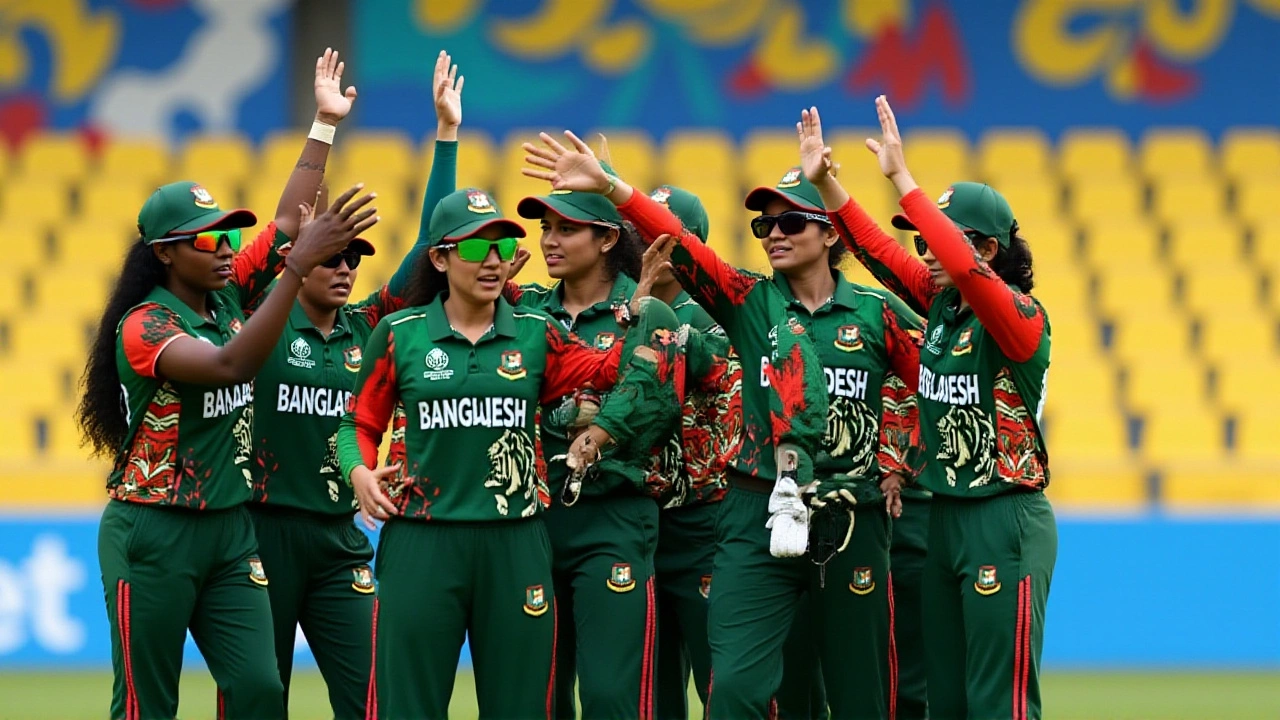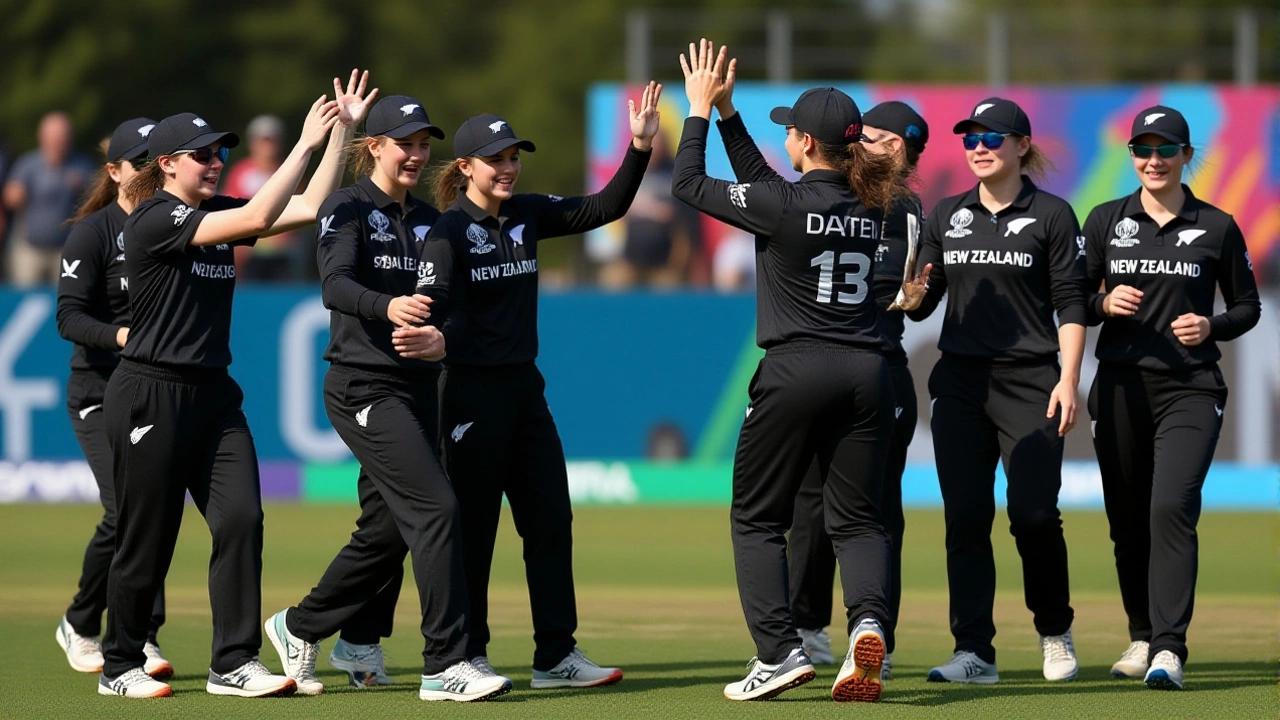
When International Cricket Council kicked off the ICC Women's Cricket World Cup 2025India on September 30, the cricket world expected the usual powerhouses to dominate. Fast‑forward to October 10, 2025, and the leaderboard tells a slightly different story. England women's national cricket team sits atop the table with a perfect 4‑point haul, while hosts India women's national cricket team matches them on points but trails on net run rate. The surprise package? Australia women's national cricket team, long‑time favorites, sit third with a single point shy of the leaders despite boasting the highest net run rate.
What the tournament is all about
The 2025 edition marks the twelfth iteration of cricket's premier women's One‑Day International championship. Eight nations earned their tickets through a mix of automatic host qualification, a three‑year ICC Women’s Championship, and a last‑chance qualifier held in Pakistan in April. The lineup spans three continents: Asia (India, Pakistan, Bangladesh, Sri Lanka), Oceania (Australia, New Zealand), Africa (South Africa), and Europe (England). Every side plays each other once in a round‑robin format; the top four then move on to the semi‑finals.
Current standings at a glance
- 1️⃣ England – 2 matches, 4 points, NRR +1.757
- 2️⃣ India – 2 matches, 4 points, NRR +1.515
- 3️⃣ Australia – 2 matches, 3 points, NRR +1.780
- 4️⃣ Bangladesh – 2 matches, 2 points, NRR +0.573
- 5️⃣ New Zealand – yet to register a win (data pending)
- 6️⃣ South Africa – pending
- 7️⃣ Pakistan – pending
- 8️⃣ Sri Lanka – pending
The points system is textbook ICC: two for a win, one for a tie or no‑result, zero for a loss. England’s two victories came against Bangladesh (by 45 runs) and a nail‑biting chase against Australia, where a last‑over four‑run sprint clinched the win. India’s wins versus South Africa and a rain‑affected no‑result against New Zealand keep them level on points but slightly behind on NRR.
Why Australia’s position feels odd
Australia’s net run rate of +1.780 is the highest of any side, a figure usually synonymous with dominance. Yet they sit third because both of their matches ended in a tie and a loss – a rare combination in World Cup play. The tie against England was a roller‑coaster: 250 all out, then England squeaked back with 251/9 in the final over. The subsequent defeat to India saw the Aussies crumble at 222/7, with India’s chase finishing comfortably at 224/3.
Fans and pundits alike are scratching their heads. Former Australian captain Meg Lanning admitted, “Our batting depth held up, but a couple of mis‑fielded chances cost us dearly. The NRR tells one story; the points tell another.”
Voices from the field
England captain Heather Knight praised her side’s discipline: “Sticking to our game plan and rotating the bowlers early gave us the pressure we needed. The points table reflects the hard work.”
India’s star all‑rounder Smriti Mandhana said, “Playing at home adds a layer of expectation, but the crowd’s energy lifts us. We’re just a win away from the top.”
Bangladesh’s coach, Hashim Khan, highlighted their progress: “Two points in two games is a solid start for a side still building its core. The world will notice us soon.”

What’s next for the tournament
The next round of fixtures rolls out over the next ten days, with high‑stakes clashes slated for October 15‑22. England faces New Zealand, a match that could seal a semi‑final berth. India’s showdown with South Africa is expected to be a tactical battle, while Australia will look to bounce back against Pakistan, a side eager for redemption after a shaky start.
Analysts project that if England and India continue their form, the semi‑finals could see a classic England‑India duel at a neutral venue. Meanwhile, should Australia recover their points, a “Big Three” scenario might unfold, echoing the 2022 edition.
Why this matters beyond the scoreboard
The 2025 World Cup is more than just a trophy chase; it reflects the rapid growth of women’s cricket in Asia and Africa. The inclusion of Bangladesh and Pakistan, both making their first appearances in a World Cup group stage, signals a widening talent pool. Moreover, the tournament’s spread across eight Indian cities – from the historic Eden Gardens in Kolkata to the high‑altitude Chinnaswamy Stadium in Bengaluru – showcases the sport’s expanding fanbase.
Financially, the ICC reported that broadcast rights for the women’s tournament fetched $28 million, a 15 % increase over 2022, indicating rising commercial interest. Sponsors are also eyeing the event: a major sports apparel brand announced a multi‑year partnership with the England women’s team, aiming to boost visibility for female athletes worldwide.
Frequently Asked Questions
Which teams are currently in the top four?
As of October 10, 2025, England, India, Australia, and Bangladesh occupy the first four spots, with England and India tied on points but England leading on net run rate.
Why does Australia have the highest net run rate yet sit third?
Australia’s two matches produced a strong overall scoring margin (+1.780 NRR), but they earned only three points because one game ended in a tie and the other was a loss, leaving them behind England and India on the points table.
When and where is the final scheduled?
The final is slated for late October 2025, with the exact date and venue to be confirmed by the ICC after the semi‑finalists are decided. All venues are located within India.
How does the 2025 tournament compare financially to previous editions?
Broadcast rights for the 2025 edition generated about $28 million, roughly 15 % more than the 2022 tournament, reflecting growing global interest in women’s cricket.
What impact does this World Cup have on emerging cricket nations?
The inclusion of Bangladesh and Pakistan in the group stage offers invaluable experience, boosts domestic investment, and inspires young female athletes in South Asia to pursue the sport at higher levels.

Write a comment